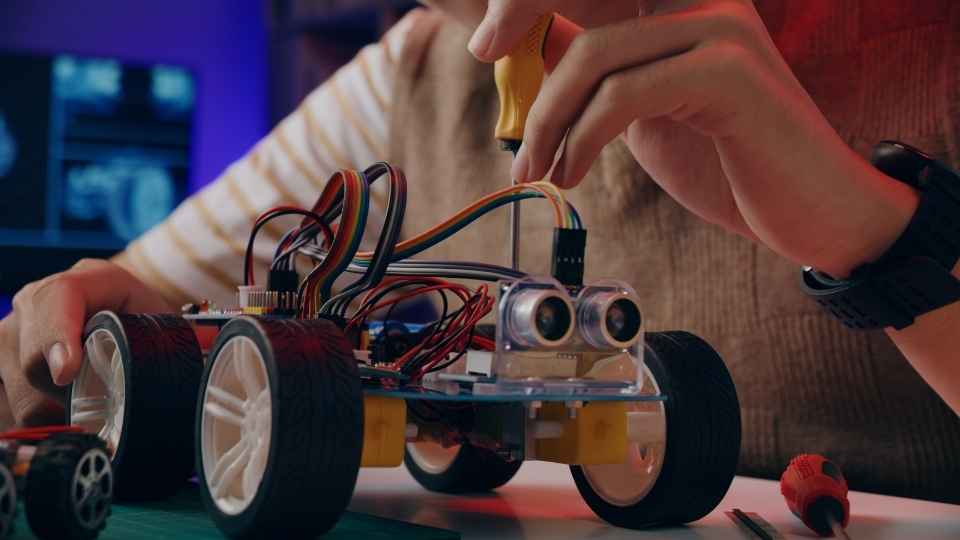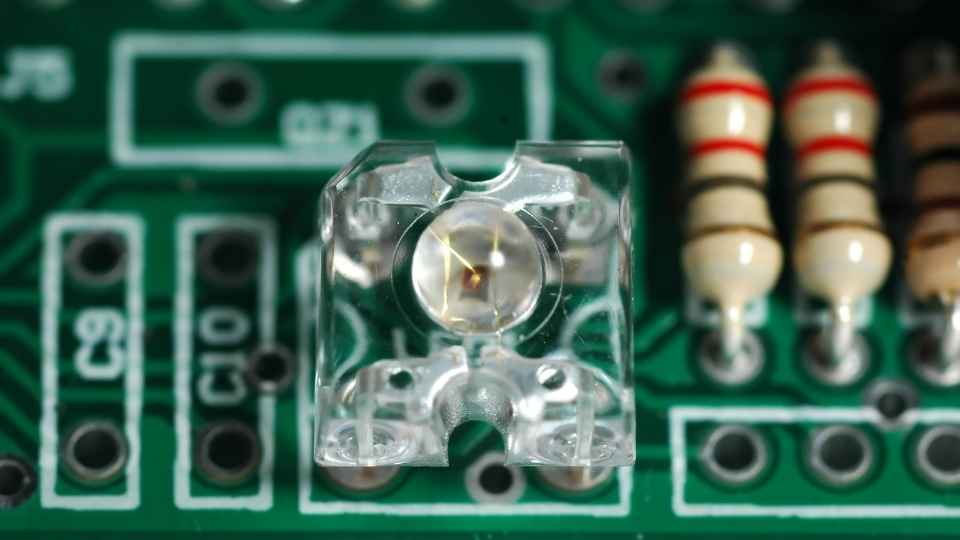
In the realm of DIY power supply projects, where batteries and solar power take center stage, there exists a world of possibilities waiting to be harnessed.
Imagine the freedom that comes with understanding different types and capacities of batteries, building custom adapters with precision and finesse, or harnessing the limitless energy of the sun through solar panels.
In this article, we delve into the technical aspects of these projects, providing a step-by-step guide to empower you in your quest for self-sufficient power solutions.
Key Takeaways
- DIY power supply projects offer customization and cost-effectiveness.
- Proper wiring and safety precautions are crucial to prevent accidents and damage.
- Different power sources, such as batteries and solar power, can be explored for DIY projects.
- DIY power supply projects have various applications, including electronics, outdoor activities, and emergency situations.
Battery Basics: Understanding the Different Types and Capacities
Battery Basics: Understanding the Different Types and Capacities is essential for anyone seeking to design and build their own power supply projects, as it provides a comprehensive understanding of the various types of batteries available and their respective storage capacities.
There are several different types of batteries commonly used in power supply projects, including lithium-ion, lead-acid, nickel-cadmium, and alkaline batteries. Each type has its own unique characteristics and advantages, making it important to choose the right battery for your specific needs.
Lithium-ion batteries are lightweight and have a high energy density, making them ideal for portable devices. Lead-acid batteries are known for their reliability and ability to deliver high currents over short periods. Nickel-cadmium batteries have a long cycle life and can withstand extreme temperatures. Alkaline batteries are inexpensive and widely available.
Understanding battery capacities is also crucial when designing power supply projects. Capacity refers to the amount of charge that a battery can store, typically measured in ampere-hours (Ah) or milliampere-hours (mAh). Higher capacity batteries can provide more power over longer periods.

Building DIY Battery Adapters: Tips and Tricks
When it comes to building DIY battery adapters, there are several tips and tricks that can ensure successful outcomes.
One important consideration is adapter compatibility with devices, as not all batteries will work with every device.
Additionally, a thorough understanding of wiring and proper connections is crucial for safe and efficient operation.
Adapter Compatibility With Devices
Adapter compatibility with devices is an essential consideration when selecting a power supply for DIY projects involving batteries and solar power. Ensuring that the adapter is compatible with the device you are powering is crucial to prevent damage or inefficiencies in your project.
Here are four key factors to consider when assessing adapter compatibility:
Voltage: The voltage output of the adapter should match the voltage requirements of your device. Using an adapter with a higher or lower voltage can result in undercharging or overcharging, potentially damaging your device.
Current rating: The current rating of the adapter should be equal to or higher than the current required by your device. If the adapter cannot provide enough current, it may lead to inadequate power supply and potential performance issues.

Connector type: The connector on the adapter should be compatible with your device's input port. Different devices may have different connector types, such as USB, barrel plug, or proprietary connectors.
Polarity: Some devices require a specific polarity (positive or negative) for proper operation. It is essential to ensure that the polarity of the adapter matches your device's requirements.
Wiring and Connections Guide
To ensure proper functionality and minimize the risk of damage, it is crucial to pay close attention to the wiring and connections when setting up a power supply for your devices. Proper wiring and connections are essential for delivering the required power efficiently and safely.
When selecting wires, consider their gauge and current-carrying capacity to match the power requirements of your devices. Use high-quality connectors that offer secure connections and low resistance. It is recommended to use soldered connections with heat-shrink tubing or crimped connectors for reliable contact.
Ensure that all connections are properly insulated to prevent short circuits or electrical hazards. Additionally, it is important to follow industry standards and guidelines while routing wires, taking into account factors such as proximity to high-voltage components or heat sources.
Harnessing Solar Power: Exploring the Benefits and Components
Harnessing solar power is an effective and sustainable way to generate electricity.
Solar panels, the main component of a solar power system, convert sunlight into usable energy through photovoltaic cells.

The benefits of utilizing solar power include reduced carbon emissions, lower energy costs, and increased energy independence.
Solar Panel Efficiency
Solar panel efficiency is a crucial factor to consider when establishing an effective and sustainable power supply system. High efficiency ensures that solar panels can convert the maximum amount of sunlight into usable electrical energy. Here are four important aspects to understand about solar panel efficiency:
Conversion Efficiency: This refers to how effectively a solar panel converts sunlight into electricity. The higher the conversion efficiency, the more power it can generate.
Temperature Coefficient: Solar panels are affected by temperature, with higher temperatures reducing their efficiency. A low temperature coefficient indicates better performance in hot climates.
Tolerance Range: Solar cells may have slight variations in their output, even within the same manufacturing batch. A narrow tolerance range means more consistent performance across all panels.
Degradation Rate: Over time, solar panels may experience a decrease in efficiency due to wear and tear or exposure to environmental factors such as humidity and UV radiation.
Understanding these factors allows individuals to choose the most efficient solar panels for their DIY power supply projects, ensuring optimal performance and long-term savings on energy costs.

In order to fully utilize solar energy for powering our homes or other devices, it is crucial not only to generate electricity but also store it efficiently and use it wisely.
Storage and Usage
Efficient storage and effective usage of generated electricity are essential components in fully utilizing solar energy for residential or commercial purposes.
In order to maximize the benefits of solar power, it is crucial to have a reliable storage system that can store excess energy during peak production times and release it when demand is high or when there is no sunlight available.
One popular method of storing solar energy is through battery systems, such as lithium-ion batteries, which provide a long lifespan and high energy density. These batteries can be connected to the solar panels and store electricity for later use.
Additionally, advanced inverters are used to convert the direct current (DC) generated by the panels into alternating current (AC), which is suitable for powering electrical devices.
DIY Solar Panel Installation: Step-by-Step Guide
In the process of setting up a DIY solar panel system, carefully following the step-by-step installation guide is crucial to ensure a successful and reliable power supply. Here are four key steps to consider:
Site Assessment: Evaluate your location to determine the best placement for solar panels. Consider factors such as sun exposure, shading, and roof angle.

Equipment Selection: Choose high-quality solar panels, inverters, mounting hardware, and wiring components that meet your energy needs. Research reputable brands and compare specifications.
Installation Process: Begin by securing proper permits and ensuring compliance with local regulations. Install the mounting hardware securely on your roof or ground-based structure before connecting the solar panels in series or parallel configuration. Connect all electrical components according to manufacturer instructions.
System Testing and Maintenance: After installation, test the system's performance using monitoring equipment or software tools. Regularly inspect and maintain the system for optimal efficiency.
Maximizing Solar Power Output: Techniques and Optimization
To maximize the output of a solar panel system, it is essential to carefully assess site conditions and implement optimization techniques.
Site assessment involves analyzing factors such as the orientation and tilt of the panels, shading obstacles, and local weather patterns. By positioning the panels at an optimal angle towards the sun's path, maximum sunlight exposure can be achieved throughout the day.
Shading from nearby objects should be minimized or eliminated altogether to prevent any loss in solar energy absorption.
Additionally, periodic cleaning of the panels is crucial to remove dust and debris that may accumulate over time, thus ensuring optimal performance.

Monitoring systems can also be installed to track power generation levels and identify any potential issues promptly.
Employing these optimization techniques will enable users to harness maximum solar power output while enjoying freedom from conventional energy sources.
Voltage Regulators: Ensuring Stable Power Supply for Your Projects
Voltage regulators are essential components in ensuring a stable power supply for your projects. They help maintain a constant voltage level, preventing fluctuations that can damage sensitive electronic devices. Here are four key points to consider when using voltage regulators:
Types of Voltage Regulators: There are different types of voltage regulators available, including linear and switching regulators. Linear regulators provide a simple solution with low noise but have lower efficiency. Switching regulators are more efficient but may introduce more noise.
Input and Output Voltage Range: Ensure that the input voltage range of the regulator matches the power source you are using. Additionally, verify that the output voltage range is compatible with your project's requirements.
Current Capacity: Consider the current capacity of the regulator to ensure it can handle the power demands of your project without overheating or failing.
Protection Features: Look for voltage regulators with built-in protection features like overvoltage protection, overcurrent protection, and thermal shutdown to safeguard your circuits from potential damage.

Transformers play a crucial role in providing the necessary voltage conversion for various applications, ensuring compatibility between power sources and electronic devices.
In DIY power supply projects, transformers are commonly used to step up or step down voltages to meet the specific requirements of different components. When choosing a transformer, factors such as input and output voltage levels, power rating, and physical size must be considered.
It is important to select a transformer that can handle the desired load without overheating or causing voltage drops. Additionally, proper wiring techniques should be followed to ensure safe and efficient operation.
Transformers offer flexibility in power supply design and can be used in conjunction with other components like rectifiers and capacitors to create reliable power sources for DIY projects.
Frequently Asked Questions
How Can I Calculate the Size of Battery I Need for My DIY Power Supply Project?
To determine the size of battery needed for a DIY power supply project, factors such as power consumption, duration of use, and efficiency must be considered. Calculating the total energy consumption will assist in selecting an appropriate battery capacity.
What Are the Safety Precautions I Should Take When Working With Batteries and Solar Power?
When working with batteries and solar power, it is essential to prioritize safety. Precautions such as wearing protective gear, ensuring proper ventilation, and following correct wiring procedures can help prevent accidents and maintain a secure working environment.
Can I Connect Different Types of Batteries Together in My DIY Power Supply Project?
Yes, you can connect different types of batteries together in your DIY power supply project. However, it is important to consider their voltage and capacity compatibility to ensure optimal performance and safety.

Are There Any Specific Regulations or Permits I Need to Consider When Installing Solar Panels?
When installing solar panels, it is important to consider specific regulations and permits. These may vary depending on your location and can involve building codes, electrical permits, zoning requirements, and utility interconnection agreements. Compliance with these regulations ensures a safe and legal installation.
What Are Some Common Troubleshooting Techniques for Maximizing Solar Power Output in DIY Projects?
To maximize solar power output in DIY projects, common troubleshooting techniques include checking for shading or obstructions, ensuring proper alignment and tilt of the solar panels, cleaning the panels regularly, and monitoring system performance using a solar power monitoring tool.
 Basic Electronics ConceptsEssential ToolsCircuit Design BasicsMicrocontrollersDIY Electronics ProjectsRoboticsPrivacy PolicyTerms And Conditions
Basic Electronics ConceptsEssential ToolsCircuit Design BasicsMicrocontrollersDIY Electronics ProjectsRoboticsPrivacy PolicyTerms And Conditions
